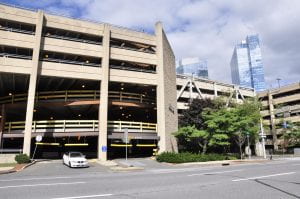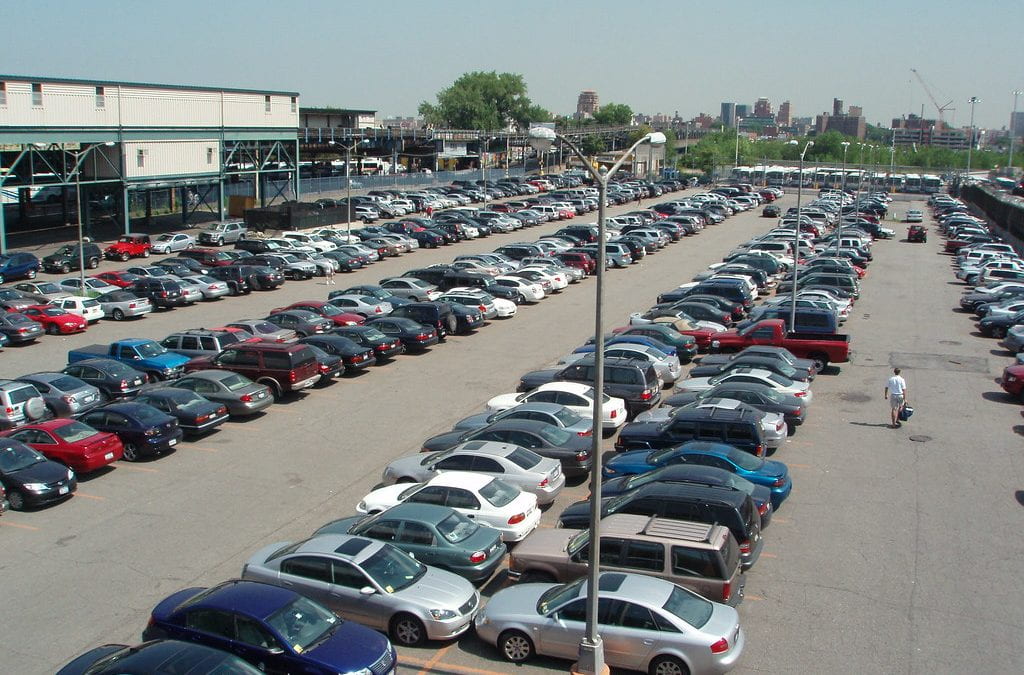The Institute of Transportation Engineers (ITE) was founded in 1930 with the goal “to improve mobility and safety for all transportation system users and help build smart and livable communities.” The idea behind the ITE was to help developers with roadway design, traffic management, and parking requirements. However, the ITE has created more problems, particularly when it comes to parking. For decades, the ITE recommended parking minimum requirements ill-suited for the municipalities implementing them.
The primary issue with parking recommendations from the ITE is that the studies they relied on were based on selective data. For instance, in the 1987, second edition of the ITE’s Parking Generation, the ITE created half of their parking generation rates based on just four or fewer studies that were conducted in suburban areas. Researchers conducted these studies during times of peak parking demand and in areas where there was plenty of free parking and little to no use of public transit.
This has led urban planners in cities to use suburban rates to set parking requirements that were incompatible with urban environments, resulting in an excessive amount of parking in some areas. This created a circular planning process that has only exacerbated issues. It goes something like this:
- The ITE published their findings in Parking Generation using the selective suburban data,
- City urban planners set parking requirements based on those findings,
- Developers implemented those parking plans,
- The resulting ample supply of parking drove the price of parking in specifically designated lots down to zero,
- Because of the massive amount of land used to create these parking specifications, cities saw decreased walkability and density of facilities,
- The sprawl, combined with the plethora of free parking options, led to increased vehicle usage,
- The increased parking demand again validated the ITE’s findings.
And the cycle repeats. This process has, unsurprisingly, resulted in an overabundance of parking. In the United States, surface parking lots alone cover more than five percent of all urban land, representing an area greater than the states of Rhode Island and Delaware combined.

To be clear, the ITE is not solely to blame. As mentioned in Rethinking A Lot, urban planners and policymakers frequently rely on the recommendations provided by the ITE for parking requirements without ensuring their accuracy for their respective municipalities. The ITE has an inherent authority that makes planners regard its findings as valid, precluding in planners’ minds the need for further inquiry. The use of ITE’s manuals also allow public officials to avoid responsibility for excessive parking lots.
Due to a lack of planning and engagement of the proper parties involved in parking use and development, inaccurate parking demands arise. While urban planners readily observe this problem, they often fail to take the necessary steps to actually address it. Even municipalities directly contribute to the overabundance of parking by offering free spaces, which inevitably fill up quickly, and then opting to add more parking, which creates an overabundance without addressing the root problem.
Municipalities also look to other authorities, such as the Urban Land Institute (ULI) for parking guidance. However, the ULI has many of the same problems as the ITE. ULI reports have recommended an excessive amount of parking, with some ULI reports calculating a “need” for more spaces than ITE reports. Municipalities cannot blindly rely on these institutions to supply perfectly accurate data. Municipalities need to measure parking demands with the “ongoing data analysis, community assessment, and demand analysis” that is most relevant to them.
The ITE, recognizing that municipalities still rely on its findings, is also attempting to fix the situation by adapting and changing the new Parking Generation manuals. The most recent, the 2019 Parking Generation Manual, features land use descriptions and data plots of a variety of available land uses, time periods, and independent variables in the ITE database. The parking database is now broken up into settings that include “Multi-Use Urban” and “Center City Core,” which work to pinpoint the most relevant studies for specific cities’ needs. The goal of this manual is to help describe the relationship between parking demand and the characteristics of the individual development site.
Donald Shoup, Professor in the Department of Urban Planning at UCLA, recommends that the ITE follow in the footsteps of the British counterpart to Trip Generation, the “Trip Rate Information Computer System.” This system gives information about the characteristics of every surveyed site and its surroundings, which would allow municipalities to use comparable sites before making land use decisions.

Despite the empirical evidence surrounding the overabundance of parking, as well as its deleterious environmental effects, few municipalities are changing parking requirements and financers still pass on projects that “don’t have enough parking,” even with the new ITE recommendations.
One successful technique is shared parking, a parking management tool that communities can employ when setting parking requirements. Different types of land uses attract customers, workers, and visitors during different times of the day, which results in differing peak parking demand hours for the related land uses. Shared parking takes advantage of these varying demand patterns and allows adjacent land uses with complementary peak demands to share a parking lot space. This not only encourages centralized parking rather than scattered lots, but also reduces overall construction costs which could greatly benefit both municipalities and developers.
Several municipalities have implemented shared parking, including Ventura, CA which has a zoning ordinance that permits different land uses to have shared parking because of opposite peak parking demand periods. The shared parking is allowed to satisfy one hundred percent of the minimum parking requirements for each land use. Similarly, North Kansas City, MO, by permit, allows a reduction of the number of parking spaces multi-use developments need to have if they have different peak parking demand periods.
Finally, in West Hartford, CT, the zoning code provides an alternative method of meeting parking requirements. So long as the applicant seeking to enter into a shared parking agreement can prove the lot would be convenient for all parties and would not cause traffic congestion, it can get approved. The municipality has since consolidated many parking lots down for shared use.
To truly reverse the detrimental impacts of the old ITE reports on the development of cities, urban planners and lawmakers will need to implement a multi-faceted approach. In addition to conducting their own parking studies based on the proposed uses and characteristics of the community, urban planners and lawmakers should focus on enhancing multi-modal transit and implementing shared parking. Parking minimums need to be eliminated and more parking maximums need to be developed. Focusing on the parking demands of individual development sites will help stop the cycle of creating unnecessary parking and meet parking demands in a smarter and more efficient manner.

